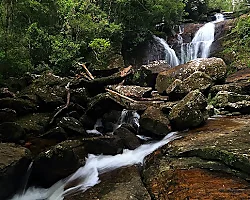Due to its diverse habitats and high species richness. Some of the notable bird species found in Sri Lanka include:
Numerous national parks and natural reserves, including Sinharaja Forest Reserve, Bundala National Park, and Kumana National Park, provide guided bird viewing excursions. For the best chances of seeing birds, travel to these locations from December to April during the dry season.
In Sri Lanka, watching birds is a pleasurable activity. Despite having only 65,610 km2, Sri Lanka has 459 bird species, and the island is home to separate genera and families for 55% of the world’s bird orders. The priority of visiting ornithologists is Sri Lanka’s 34 endemic bird species.
It is wise to keep in mind that any successful Sri Lankan birding tour requires the sighting of at least 200 species.
A successful bird viewing tour also requires convenient transportation, excellent lodging, and reliable field guides. Please feel free to get in touch with our knowledgeable bird watching tour coordinators here if you have any questions.It’s crucial to comprehend the visitor’s goals in order to choose a decent Sri Lankan bird viewing tour. Some bird watchers may choose to add some non-ornithological items to their itineraries because Sri Lanka has a well-organized tourism business. If not, any respectable bird watching tour in Sri Lanka must include the following field trips to increase the likelihood of visiting the best locations.

The Sinharaja rainforest is a valuable natural resource that needs to be protected. It is a popular tourist destination, and there are a number of hiking trails that allow visitors to explore the forest. However, it is important to be respectful of the environment and to leave no trace behind.
Here are some additional facts about the Sinharaja rainforest:

The park is a UNESCO World Heritage Site and a Ramsar Wetland. It is managed by the Department of Wildlife Conservation of Sri Lanka.
In Sri Lanka, there are a number of dry zone national parks that provide excellent opportunities to watch dry zone birds.
is the most well-liked alternative.
However, it would be advisable to travel for an additional day or two to a less popular national park if you want to escape crowds for a more relaxing bird viewing experience. Another location for dry zone bird watching that provides excellent views of waders and raptors is
Another location for dry zone bird watching that provides excellent views of waders and raptors is
There are numerous wetland eco systems in Sri Lanka that are ideal for wader hunters. Some of these, including Kumana (Yala east) National Park and Bundala National Park, are situated in the lowland dry zone.
Others, like Madu River,  are located in the lowland wet zone. Checking the Ramsar wetlands of international importance list is a good general rule of thumb. However, Bundala and Kumana are well known in Sri Lanka as excellent wetlands bird watching locations.
are located in the lowland wet zone. Checking the Ramsar wetlands of international importance list is a good general rule of thumb. However, Bundala and Kumana are well known in Sri Lanka as excellent wetlands bird watching locations.
In addition to these crucial birding locations, Sri Lanka boasts a large number of micro birding locations that can increase the likelihood of seeing the proper birds. The selection of such birding locations is primarily based on how easily they can be reached from the main locations listed above. Consider using the important bird areas (IBAs) in Sri Lanka that Birdlife International has identified for your study.
Finally, it’s critical to recognize that Sri Lanka is home to a wide variety of avifauna habitats. According to rainfall patterns, there are often three separate biological zones: the semi-arid zone, the dry zone, and the wet zone.
The island’s hilly interior, which is a montane rainforest, is part of the wet zone. At 2524 meters, Piduruthalagala is the highest peak. As it slopes into the south-western coastal plains, the same rainforest gradually transforms into a lowland rainforest. From the central highlands, 103 rivers flow descendingly.
Monsoon forests and dry scrublands are found in the semi-arid and dry zones. Reservoirs, which serve as crucial water supplies for birds living in dry zones, are used to irrigate some areas. Additionally, these locations have a number of significant coastal wetlands.

OURA Travel operates with the utmost dedication to offering exceptional experiences. While we endeavor to ensure accurate and enjoyable tours, our services are subject to availability and may change without prior notice. We bear no liability for unforeseen circumstances, injuries, or loss during the tours. Booking confirmation is contingent upon availability and adherence to our specific booking conditions, including terms and cancellation policies. Participants are advised to meet health requirements for travel, as we disclaim liability for issues arising from health or fitness limitations. Additionally, our descriptions are aimed at accuracy, although errors may occur, and we reserve the right to rectify any information or pricing inaccuracies.